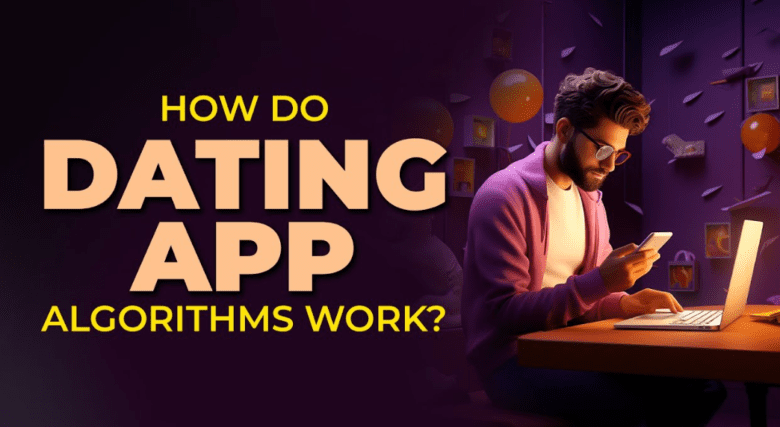The Secrets of How Dating App Algorithms Work: Uncovering the Technology Behind Matchmaking Algorithms for the Best Dating App Compatibility
In today’s online dating world, the success of platforms like Tinder, Bumble, Hinge, and OkCupid hinges on one powerful force: the dating app algorithm. These algorithms work tirelessly behind the scenes to analyze user data, preferences, and behaviors to suggest potential matches. Every dating app uses a unique combination of data analysis and machine learning to refine and improve matchmaking over time.
This article will guide you through the secrets of how dating app algorithms work, showing how they prioritize the best matches and continuously improve their matching system.

The Evolution of Dating Algorithms in Popular Apps Like Tinder, Hinge, and OkCupid
The evolution of dating algorithms began in the early days of online dating sites. Early platforms relied on simple search filters and limited user inputs to suggest matches. With advancements in technology, dating platforms like Tinder, Hinge, Bumble, and OkCupid now leverage complex machine learning algorithms and behavioral insights to improve matchmaking accuracy.
Apps like Tinder revolutionized the industry with their swipe left and swipe right feature, making dating more engaging and accessible. On the other hand, apps like Hinge focus on long term relationships, using more complex algorithms like the Gale-Shapley algorithm to ensure stable matches.
Key Algorithmic Shifts:
| Early Online Dating Sites | Modern Dating Apps |
| Basic user profiles | Comprehensive profile data |
| Search based matching | Matching algorithm driven |
| No behavior tracking | Tracks every swipe and action |
| Limited user data | Rich user behavior and preferences |
This transition from simplistic searches to more advanced matching algorithms has transformed the way dating apps work, offering users better matches based on their unique preferences and behaviors.

How Do Dating App Algorithms Work?
At the core of any dating app lies the matching algorithm, designed to connect users based on their profile, interactions, and behavior. But how do these algorithms work to match people effectively?
Data Collection and Analysis
First, every dating app collects user data when you create your profile. This includes basic details such as age, location, and gender, as well as preferences for potential partners. But that’s only the beginning.
Every action you take—whether it’s a swipe right, sending a message, or spending extra time viewing a profile—is tracked and analyzed by the app’s machine learning models. These actions provide the app with insights into your preferences, which help the algorithm refine the matching process over time.
Matching Algorithms and Compatibility
Next, the matching algorithm processes the data and suggests potential matches based on your preferences and behavior. Some of the most common techniques used by dating apps include:
- Similarity Based Matching: Matches are suggested based on shared interests, hobbies, and values.
- Behavioral Matching: The algorithm tracks how users interact with profiles and in-app features to suggest better matches.
For instance, OkCupid uses an extensive questionnaire to understand user preferences and calculate a match percentage, providing a quantitative measure of compatibility. The more you interact, the more the algorithm can refine your matches, ensuring that it meets your preferences.
Popular Dating App Algorithms Explained: Tinder, Bumble, and Hinge
Let’s take a deeper look at how the dating algorithms in popular apps like Tinder, Bumble, and Hinge operate.
- Tinder: Initially, Tinder used the Elo rating system, which ranked users based on their swipe right activity. Although the app no longer uses Elo, it still relies on a sophisticated algorithm that evaluates user behavior, preferences, and activity to suggest matches.
- Bumble: Similar to Tinder, Bumble uses a matching algorithm that evaluates user preferences, location, and behavioral data. However, Bumble also empowers women to make the first move, giving them more control over their matches.
- Hinge: Hinge sets itself apart by using the Gale-Shapley algorithm, designed to create stable matches by pairing users who are mutually interested in each other. Hinge’s algorithm prioritizes long term relationships and continuously refines matches based on user activity.
Popular Dating App Algorithm Features:
| App | Algorithm | Unique Feature |
| Tinder | Elo rating system (formerly) | Prioritizes users based on likes and interaction |
| Bumble | Matching algorithm | Empowers women to make the first move |
| Hinge | Gale-Shapley algorithm | Focuses on long-term relationships |
Secrets of Dating App Algorithms: Behind the Scenes of User Matching
Understanding the secrets of dating app algorithms requires diving into how they optimize the matching experience. While the exact mechanisms may vary across platforms, several key factors affect how dating apps work:
- User Preferences: Every detail in your profile, from your hobbies to your age preferences, helps refine the matching algorithm.
- Behavioral Data: Actions such as swipe left, swipe right, and messaging help the algorithm predict who you might be most compatible with.
- Machine Learning Models: These continuously analyze data and refine matches based on user behavior. The more data collected, the more accurate the matches become.
- In-App Activity: Dating apps also track how frequently you use the app, adjusting the frequency and types of profiles you see.
This data analysis ensures that every match you receive is tailored to your evolving preferences, helping you find better matches the more you interact with the platform.
Bias in Dating Algorithms: Ethical Concerns and Algorithmic Fairness
While dating algorithms can significantly enhance the user experience, they are not without flaws. One of the biggest challenges in these algorithms is the potential for bias. Algorithms to predict romantic compatibility can inadvertently prioritize certain characteristics, such as race or attractiveness, based on the behavior of the majority of users.
For example, Tinder’s Elo rating system initially favored users who received the most swipe right actions, creating a feedback loop that prioritized “popular” users. To combat these issues, many dating platforms now focus on enhancing algorithmic fairness by ensuring a diverse set of potential matches.
Key Ethical Issues in Dating Algorithms:
- Bias in Preferences: How algorithms work can sometimes lead to biases based on appearance or race.
- Algorithm Transparency: Many apps keep their algorithms secret, making it difficult for users to understand how matches are being suggested.
- Fairness: Ensuring that all users receive a fair opportunity for matches, regardless of how the algorithm uses user data.
Privacy and Security: How Dating Apps Collect and Protect User Data
With the immense amount of data that dating apps collect, privacy and security are crucial. Most dating platforms encrypt user information and have systems in place to protect user data from breaches or misuse.
However, as users, we also need to be aware of how much personal information we’re sharing. Dating apps like Grindr and Bumble have implemented measures such as in-app verification and report systems to ensure a safer experience.
The Future of Dating Algorithms: What’s Next for Matchmaking Technology?
As technology evolves, so will dating algorithms. Future dating apps will likely leverage more advanced machine learning techniques and even integrate artificial intelligence to offer hyper personalized matches. Some apps are already experimenting with video dating and virtual reality (VR) features to offer immersive dating experiences.
In the future, dating platforms might even use biometric data or DNA to predict more accurate and compatible matches.
How Dating App Algorithms Work to Create Better Matches
In conclusion, dating app algorithms work by analyzing user data, behavior, and preferences to create the most compatible matches possible. Whether you’re using Tinder, Hinge, Bumble, or OkCupid, these apps rely on matching algorithms and machine learning to continuously improve the matchmaking process.
By understanding how these algorithms work, users can make better use of their online dating apps and find more meaningful connections. As technology advances, dating app algorithms will continue to refine and enhance the way we connect with others in the digital world.



